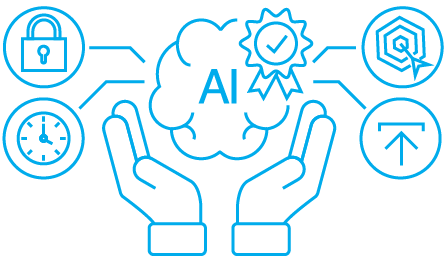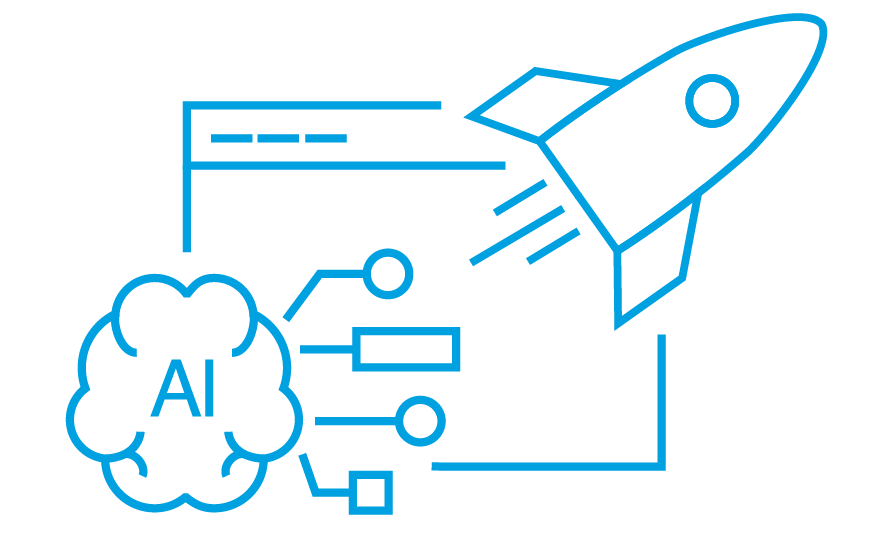- What is first party data?
- Looking for the right target group?
- How to use 1st party data?
- What is second party data?
- How to use 2nd party data?
- What is 3rd party data
- How to use third party data?
- 1st + 2nd + 3rd party data = 360-degree customer view
- 1st party vs 2nd party vs 3rd party data - differences
- Integrate 1st, 2nd and 3rd party data
Data is flooding online back and forth, and systems collect it in billions of amounts. Every day, the world generates 2.5 quintillion bytes of data, while 90% of global data was created in just the last two years. It’s getting organized, integrated and activated with different sets of rules and specific marketing actions for. Let’s take a look at differences between 1st party data vs 2nd party data vs 3rd party data, and find out how to effectively use audience data in your campaigns.
Leverage Worldwide Reach and Data Scale
What is first party data?
First party data is the information that companies collects from their own sources. In other words, first party data is every information about customers from both online and offline sources, such as the company’s website, app, CRM, social media or surveys.
The first party data can include information about internet users as following:
- demography
- visited websites & interactions
- purchase history
- interests
- time spent on website
What’s important – you can collect first party data for free, and you need to gather all the customers’ consents. It is highly important in the GDPR era (to learn more about data privacy, check our article about the GDPR: How to process customer data and comply with GDPR). With 1st party data, you deliver your users personalized experiences and display them relevant ads. Marketers can segment and monetize data by using a data platforms. They helps marketers build segments of target audiences ready for use in your campaigns.
Looking for the right target group?
How to use 1st party data?
Basically, by using first party data you deliver your current visitors personalized experience and send them messages they expect. Let’s take a look at three benefits of using first party data in company.
1. Create personalized experience with audience data
First party data helps you know your users and divide them into specific target groups. With first party data you can analyze your online traffic and create audiences who are looking for specific products or are interested in a particular topic, such as sport or automotive. This data enables you to create highly personalized messages and increase the effectiveness of your marketing efforts. Read more about targeting in programmatic advertising – check our article: Programmatic targeting: Options to improve your business.
2. Comply with GDPR
1st party data is the most transparent type of data. You own it and you are responsible for collecting all necessary consents. Your law department can give you the best instructions what information you should give your users to process their audience data in compliance with privacy regulations. Basically, users rather agree to process their data if you offer a specific benefits.
In the age of GDPR, it is extremely important to collect data legally and 1st party data is one of the most trusted and valuable users’ data.
3. Get insights about your target audience
Collecting first party data gives you a chance not only to store data but also to look deeply into your users’ profiles. Data platforms allow you to integrate data about your users from various sources (website, surveys, apps, games), and create a full view of your customers. What he or she likes/dislikes? Which products your users want to buy? Which websites do they visit after leaving your page? Data will tell you a lot about your target groups behaviour. It is a priceless knowledge for improving your marketing efforts.
What is second party data?
Second-party data is often defined as someone else’s first-party data. It means that if your potential business partner gathers data and wants to share it with you, it will become your second party data. You can use this data for audience targeting or enriching your own database. The information may come from your partner’s various sources, including websites, apps or offline sources, such as surveys.
By gathering second party data, you get access to information about consumers potentially interested in your products. It is rather a small group, but with a specific interest or behavior, e.g.:
- craft beer lovers,
- soccer fans that have been on their favorite team stadium in the past two weeks.
Since second party data is someone else’s first party data, technically, it can include information similar to the first part data, e.g., demography, purchase history, etc.
How to use 2nd party data?
When you use 2nd party data from your partner, you get just one brick that can create huge 3rd party sets. Learn more about 3rd party data – check our post: How to use the power of 3rd party data.
Although a small data set may look limited, it doesn’t mean it’s bad or low quality. Second-party data sets often bring great value because you know your business partner and understand what kind of data they collect. You also know the exact sources where the data comes from, for example, airline websites or online fashion stores. And finally, with 2nd-party data, you deal directly with your partner, without a middleman in the transaction. It is common practice on the market to receive the audience data from your partner as a barter.
Receiving the data from your partner makes it possible to create really creative campaigns. When you combine data you got with the data you wish to have (e.g., where your customers usually drink coffee or travel), it opens new opportunities to deliver your customer highly personalized campaigns.
What is 3rd party data
3rd-party data gives you information about online users, including their interests, demographics, and purchase intentions. When you use 3rd-party data, you can precisely target audience groups and show them relevant ads, for example, for your new car.
You select attributes for your target group, such as age, gender, interests (like automotive or travel), and purchase intentions (cars). Only this narrow group sees your ads, instead of people who have no interest in your products.
With 3rd-party data, marketers can track which websites customers visit and which products or brands they view. This knowledge helps marketers understand what customers plan to buy and adjust campaigns to meet that intent.
3rd party data can be used not only in targeting the right audience in online campaigns. It is also crucial in data enrichment processes of systems like CRM or in developing Business Intelligence solutions.
By matching customers’ IDs, firms are filling the gaps in their clients’ profiles, such as interests or demography. Having this information is highly important in creating personalized ads that help improve the effects of digital marketing activities.
How to use third party data?
In a few words, 3rd party data lets you run more effective digital campaigns targeted at users that have not been your visitors. It is mostly used in programmatic campaigns. By using knowledge about Internet users you can easily:
- run personalized ad campaigns
- send tailored marketing messages
- precisely target your audience
- reach out to new customers
All these activities are a target to improve your digital presence, increase sales and give your customers exactly what they need. Know their profiles and give them what they expect. If they’ll get it, you significantly improve the effects of your marketing efforts. To find best 3rd party data provider, check our article: How to Choose a 3rd-party Data Provider.
1st + 2nd + 3rd party data = 360-degree customer view
Let’s observe the main differences of 1st party data vs 2nd party data vs 3rd party data.
Let’s say you’re a successful women’s shoe producer. You have a big database with your current clients’ information along with a detailed analysis of their profiles – this was gathered out of your website and placed into your CRM. It’s data with the highest quality, trustful and free – this is your 1st party data.

Now let’s assume you decide to extend your market range and start producing shoes for men. You don’t know the characteristics of your target male audience, so you look for a partner who knows them and can share that knowledge with you. The information you receive from this partner and later use to target your male customers is called 2nd-party data. By using it, you grow your network with data that your partners also share.
To complete the picture and build a full package of customer insights across both genders, you then turn to 3rd-party data. This data shows what your customers are interested in beyond your products, what path they took before visiting your website, where they are located, and whether they are just browsing or ready to buy.
1st party vs 2nd party vs 3rd party data – differences
Now let’s sum up the knowledge about the types of data that you can gather or use:
- 1st party data is the most reliable and unique piece of information, coming from your own sources.
- 2nd party data is shared with various co-partners and might have less accuracy.
- 3rd party data, on the other hand, is a set of data from rather unknown sources.
That’s why you have to be sure that your 3rd party data was being processed accordingly. It must be GDPR compliant and tested by the respective agency in terms of required regulations. This is a regular process that is done by OnAudience. We use Nielsen DAR for testing received demographic data.
So, having all the required info, you are ready to convert your gathered data into the profit of your own.
Integrate 1st, 2nd and 3rd party data
Technology for managing and combining audience data will help you store all types of digital information you receive from various sources, such as websites, apps, surveys or data platforms. By collecting data on the platform you can make this data targetable, so you can use it next in Demand-Side Platforms (check What is a Demand Side Platform (DSP) & How Does It Work?) to reach out to the precisely chosen audience. It is fast and easy, so you conduct many campaigns and monitor their efficiency.
Moreover, by using data platforms, you can integrate your own data (1st party) with your partners’ data (2nd party) and with the data purchased on global platforms (3rd party).
Thanks to data integration you can fill the gaps in your customer database. It lets you truly know your audience: their interests, demography or purchase intentions. Why is it important? Because it allows you to deliver your users’ personalized messages tailored to their needs, which have a positive influence on brand experience. Dive deeper into audience data with us! Check out how to find your best audiences and How to Buy Audience Data.


